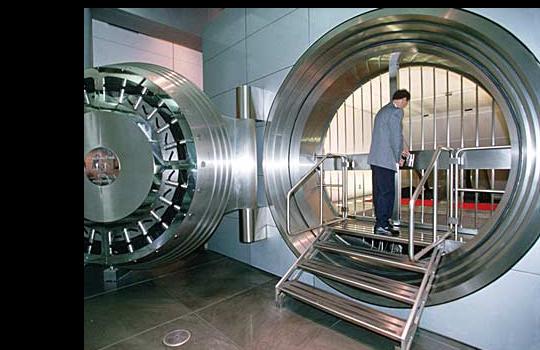Matchett’s senior consultant Amanda Brown has taken a novel look at the process of project management and how it relates to George Clooney and Brad Pitt’s Oceans Eleven.
Initially, I thought that it was just a good film, she writes, now I realise that it is a case for the well organised project, following the stages of a project life cycle.
It’s got us thinking, what other films can serve as useful business training lessons? Leave your suggestions below this article.
Oceans Eleven: The Concept
Rusty: “You have a plan already”
Danny: “You kidding? I just became a citizen again!”
Danny Ocean (Clooney) has the perfect project, the heist of all heists; the job which is going to allow him to retire for good. On release from prison, he seeks out Rusty (Pitt), the one person he knows and trusts to help him plan and manage the project he has in mind. They run through the concept, checking the feasibility, and then present it to the project sponsor, Reuben.
Stakeholder analysis helps them to understand the right hook to reel Reuben in – the casinos they want to rob belong to Reuben’s biggest enemy – a classic case of using the WIIFM (what’s in it for me) principle. For Reuben, the job is now about getting one over on his rival, the money is just a bonus.
Some high-level risks are identified at this stage, previous lessons taken from past casino robberies, and the final justification is outlined: Get the money out of the casino without letting the big boss know who they are
Planning/Definition
At this point the team is picked. Project manager Danny and number two Rusty recruit some team members who they have worked with before. They go looking for specific skills linked with anticipated elements of the project – those people they don’t know are carefully selected. Whilst their cut of $150 million is attractive, the team are also motivated by the challenge of a large job which tests their expertise, and the chance to work with fellow professionals.
“It will be nice to work with proper villains again”.
Once the team is formed the high-level outline of a plan is communicated through a detailed presentation. Plans of the buildings have been obtained and some of the risks are identified:
"Say we get into the cage, and through the security doors we can’t open and down the elevator we can’t move and past the guards with guns, what then?"
Contributions from the specialists help to tackle or minimise these risks. Further risk analysis is done by creating a model of the entire vault that they are going to rob and reviewing the various 'what ifs' the plan implies. The project is then divided into tasks and clear outputs and responsibilities assigned to each of the team members. The team then prepare their individual parts of the job and the project plan is ready.
Implementation
Now the plan has been agreed by the project team, the Project Manager and the Sponsor, the pieces start to be put together. The team is briefed in more detail over a model of the casino. Timings are compiled and synchronised for all the component parts of the project – including timing how much air there is for their man smuggled into the vault.
During implementation their first issue crops up. Plans to cut the power have been thwarted by an unforeseen and unrelated accident. Immediately the project is reviewed on a go/no go basis. Using the team’s specialist skills however, it’s established that the issue can be resolved. It is just going to cost some extra effort and risk. This is factored into the plan and the project is still ‘go’.
During the heist, one of the team monitors progress over the casino surveillance systems and communicates with the other team members. In this way they manage small glitches in the plan and circumvent minor issues. In addition, they have several layers of backup in the plan to further reduce the risk of failure.
Handover and Close
The end of the project is clearly defined by a successful robbery on the correct day when the maximum take is in the casino vault, with each of the team taking their share. Additionally, the identity of the team remains unknown to the casino boss. The final closure is the after-project party; the team assemble outside the casino and watch the fountains before being disbanded.
Have you ever thought a particular film could be used to illustrate a common business problem or demonstrate a process or strategy? Tell us about it! Post your comments below.
Matchett specialise in the areas of Project Management, Management Development, Business Skills and Personal Development training.











One Response
Great Article!
Insightful article! Love the comparision to Oceans 11. The planning and definition stages ring particularly true!